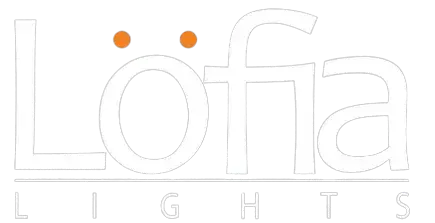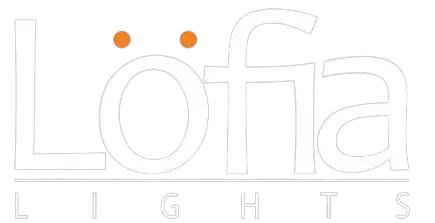The Middle East lighting sector is witnessing an unprecedented boom.
This growth is led by mega-projects like Saudi Arabia’s Vision 2030 and NEOM, with trillion-dollar investments demanding innovative lighting solutions. A strong government push towards sustainability and energy efficiency supports this, making energy-saving LED lighting a mandatory standard.
Economic diversification and industrial sector growth also contribute to the demand. Finally, population growth and urban expansion reinforce the continuous need for lighting.
What Are the Fastest-Growing Lighting Sectors in the Middle East?
The dynamic growth in the Middle East lighting market is not monolithic; it’s comprised of distinct sectors, each with its own dominant players and fast-emerging disruptors. Understanding these segments is key to identifying where the most significant opportunities lie for innovation and investment.
The Future of Indoor Lighting: Homes, Offices, and Beyond
Indoor lighting remains a foundational pillar of the market, with applications becoming increasingly sophisticated.
- The Dominant Segment: Industrial and Warehouse. This sector commands the largest market share, driven by the region’s logistics and manufacturing boom. Efficiency, durability, and low maintenance are paramount, making high-bay and low-bay LED fixtures the products of choice.
- The Fastest-Growing Segment: Agricultural Lighting. A surprising but rapidly emerging niche is agricultural lighting. With a focus on food security, countries like the UAE are investing heavily in vertical farming and controlled-environment agriculture. These high-tech farms require specialized LED grow lights that can optimize plant growth, making this a high-value, technology-driven opportunity.
- Other Key Areas: Commercial and Residential. The commercial space—encompassing offices, retail, and hospitality—is a hotbed for innovation, with a strong focus on human-centric and smart lighting. The residential market continues its steady growth, with a rising consumer appetite for designer fixtures and connected home lighting solutions.
How Smart Lighting is Transforming Our Cities
Outdoor applications are arguably the most visible and dynamic part of the Middle East lighting evolution, transforming public spaces into safe, efficient, and aesthetically stunning environments.
1. The Dominant Segment: Public Places
This broad category, which includes parks, stadiums, public squares, and entertainment venues, holds the largest share. Ambitious projects like the development of new athletic facilities in Saudi Arabia and theme parks in Dubai create massive demand for high-power floodlights, decorative luminaires, and dynamic lighting controls.
2. The Fastest-Growing Segment: Streets and Roadways
As nations expand and upgrade their transportation infrastructure, the replacement of conventional streetlights with connected, energy-efficient LEDs is a top priority. These projects not only yield massive energy savings (up to 75%) but also form the backbone of future smart city networks, enabling data collection and enhanced public safety.
3. Architectural Lighting
This high-profile segment focuses on turning iconic structures into luminous landmarks. From the intricate façade of Dubai’s Museum of the Future to the heritage sites being restored under Saudi’s Vision 2030, architectural lighting is a critical tool for creating a unique identity and driving tourism.
Transform your dining experience with our custom restaurant lighting solutions GCC — expert designs tailored to your venue’s unique vibe.
Top Trends in Automotive Lighting for 2025
The automotive sector represents another vital component of the Middle East lighting market, driven by both regulatory requirements and consumer preferences.
- The Dominant Segment: Passenger Cars. With high disposable incomes and a taste for luxury, the passenger car market is a major consumer of advanced lighting. LED headlights, taillights, and daytime running lights (DRLs) are now standard, with a growing trend towards adaptive and matrix LED systems that enhance both safety and style. The push towards electric vehicles (EVs) is further accelerating the adoption of sophisticated lighting technologies.
- The Fastest-Growing Segment: Commercial Vehicles. The logistics boom directly impacts the commercial vehicle market. Heavy trucks, buses, and delivery vans are being equipped with more robust and efficient LED lighting to handle the demanding conditions of long-haul travel and urban delivery, making this a segment with strong, sustained growth potential.
How New Lighting Tech is Creating Smarter Spaces?
The true excitement in the Middle East lighting market lies in the technological revolution that is redefining the very function of light. It’s no longer just about illumination; it’s about connectivity, well-being, and data.
Connecting Your Lights: A Guide to Smart Lighting and IoT
Smart lighting is the nerve center of this revolution. By integrating sensors, wireless controls, and cloud-based platforms, lighting systems are becoming intelligent. In a commercial building, this means lights that automatically adjust based on occupancy and daylight, drastically reducing energy consumption.
On a city-wide scale, it means a network of streetlights that can monitor traffic flow, detect air quality, and even provide public Wi-Fi. The Middle East lighting industry is rapidly adopting these IoT solutions to build the connected, efficient cities of tomorrow.
How Does Light Affect Your Mood and Productivity?
A profound shift is underway towards designing lighting that supports human health and well-being. Human-Centric Lighting (HCL) uses tunable LED technology to mimic the natural patterns of daylight, which helps regulate our circadian rhythms.
In an office, this can lead to improved focus and productivity. In a hospital, it can accelerate patient recovery. In schools, it can enhance student concentration. As awareness of its benefits grows, HCL is becoming a key differentiator in the premium commercial and residential segments of the Middle East lighting market.
Illuminate your luxury living with custom villa lighting design GCC — bespoke fixtures that enhance every corner of your home.
What’s New in Lighting Design and Technology?
Underpinning these advanced applications is the continuous improvement in core LED technology. Manufacturers are constantly pushing the boundaries of what’s possible:
- Higher Efficacy: More lumens per watt, meaning greater energy savings.
- Improved Color Rendering (CRI): Lights that show colors more vibrantly and naturally.
- Longer Lifespans: Fixtures that last for 50,000 hours or more, dramatically reducing maintenance costs.
- Sustainable Materials: A growing use of recycled and bio-based materials in luminaire construction, aligning with the region’s circular economy goals.
Who Are the Leaders in the Middle East Lighting Market?
In the Middle East lighting market, two companies stand out as true leaders:
| Company | Leadership in the Middle East Lighting Market |
| Lofia Light | Pioneering advanced lighting solutions in Dubai and the wider GCC, Lofia Light leads the Middle East lighting market with innovative designs and high-performance fixtures tailored for residential, commercial, and hospitality sectors. |
| Deluxe Selection | Specializing in bespoke lighting fixtures, Deluxe Selection dominates the Middle East lighting market by offering sustainable, custom solutions and expert design consultancy that transform interiors and exteriors with premium quality. |
Middle East lighting Challenges
While the trajectory is overwhelmingly positive, the Middle East lighting market is not without its hurdles. Fluctuating raw material prices can impact manufacturing costs, and intense competition often puts pressure on pricing. Furthermore, the rapid pace of technological change requires a constant upskilling of the workforce to handle the installation and maintenance of complex smart systems.
However, the future outlook remains exceptionally bright. The convergence of sustainability goals, technological innovation, and visionary leadership creates a perfect storm for growth. As this vision translates into real-world projects, the focus sharpens on sourcing solutions that are not only efficient but also culturally and architecturally resonant.
This is where suppliers with a diverse portfolio, such as Lofia Light, the Best Lighting Company in UAE, play a crucial role by providing architects and designers with access to the specific, high-quality fixtures needed to bring these ambitious concepts to life.
We can expect to see a greater integration of such products into smart city platforms and the widespread adoption of human-centric principles, ultimately setting the Middle East lighting industry as a global benchmark for what can be achieved when ambition is illuminated by innovation.
Elevate your café’s ambiance with our false ceiling design for coffee shop — stylish and functional solutions for a standout interior.
FAQs about Middle East Lighting
1. What is the current market size for LED lighting in the Middle East?
How big is the LED lighting market across Middle Eastern countries today?
The Middle East & Africa LED lighting market is substantial and growing. It was estimated to be around $8.58 billion in 2024 and is projected to reach over $17.3 billion by 2030, driven by massive infrastructure spending and a strong focus on energy efficiency.
2. How is Saudi Arabia’s Vision 2030 impacting the lighting market?
In what ways is Saudi Arabia’s Vision 2030 transforming the lighting sector?
Vision 2030 is a primary catalyst. It’s driving the construction of entirely new cities and tourist destinations like NEOM and the Red Sea Project, all of which are being built on principles of sustainability and smart technology. This creates an enormous, long-term demand for the most advanced Middle East lighting solutions, from smart streetlights to sophisticated architectural illumination.
3. What are the key smart lighting trends in the UAE?
What are the latest smart lighting trends adopted in the UAE?
The UAE is a leader in adopting smart lighting. Key trends include integrating lighting controls into building management systems, using IoT sensors for data collection (e.g., traffic, occupancy), implementing human-centric lighting in offices and healthcare, and deploying city-wide smart street lighting networks for enhanced efficiency and safety.
4. Why is LED the preferred technology for new Middle East lighting projects?
Why are new lighting developments in the Middle East choosing LED solutions?
LEDs are preferred for several critical reasons: they are highly energy-efficient (using up to 75% less energy than traditional sources), have an extremely long lifespan (reducing maintenance costs), offer superior control (dimming, color tuning), and are more durable and environmentally friendly as they contain no mercury.
5. Who are the leading lighting companies in the Middle East?
Which lighting companies are leading the Middle East market today?
The market features a mix of global giants and regional specialists. Major international players include Lofia Lights and Deluxe Selection.
6. What is human-centric lighting and why is it important in the region?
Why is human-centric lighting becoming essential in modern buildings?
Human-centric lighting (HCL) is an approach that uses tunable LED light to mimic the natural day-night cycle. This supports the body’s natural circadian rhythm, which can improve well-being, productivity, and sleep. In a region with a strong focus on employee wellness and premium real estate, HCL is becoming a key feature in modern offices, hospitals, and luxury residences.
7. Are there specific challenges for lighting products in the Middle East climate?
What environmental factors must light systems handle in the Middle East?
Yes. Lighting products, particularly for outdoor use, must be engineered to withstand extreme conditions. This includes high ambient temperatures (often exceeding 50°C), high humidity, and exposure to fine dust and sand. Durability and a high IP (Ingress Protection) rating are critical for product success in the Middle East lighting market.
8. How does lighting contribute to the sustainability goals of the region?
How does energy-efficient lighting support regional sustainability plans?
Lighting is a cornerstone of regional sustainability strategies. By switching to energy-efficient LEDs, cities can massively reduce their electricity consumption and associated carbon emissions. Smart lighting adds another layer of savings by ensuring light is only used when and where it’s needed. This directly supports the ambitious net-zero targets announced by countries like the UAE and Saudi Arabia.
9. What is the future of architectural lighting in the Middle East?
What’s the future outlook for architectural lighting in the Middle East?
The future is dynamic and integrated. Architectural lighting will move beyond simple floodlighting to become a key part of a building’s identity. Expect to see more dynamic, color-changing facades, media screens integrated into architecture, and lighting that responds to events or environmental conditions, further cementing the region’s reputation for iconic and futuristic buildings.



